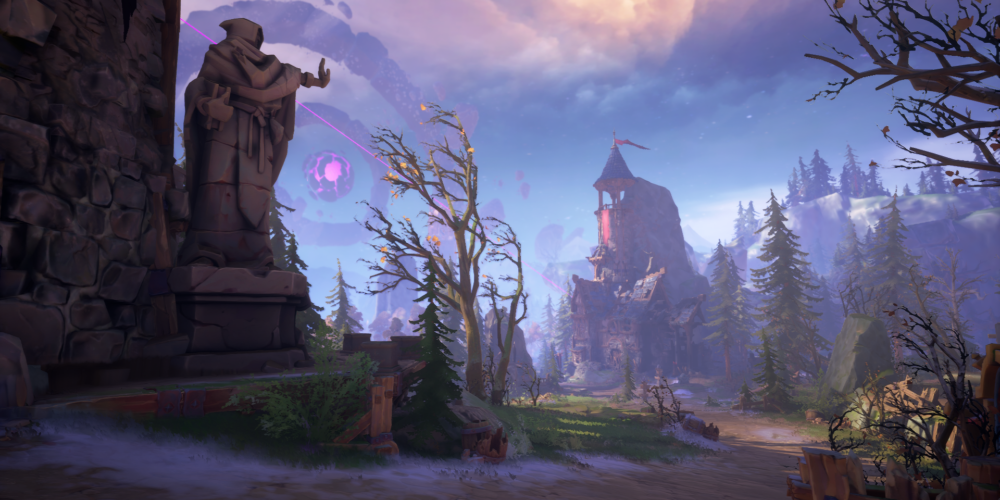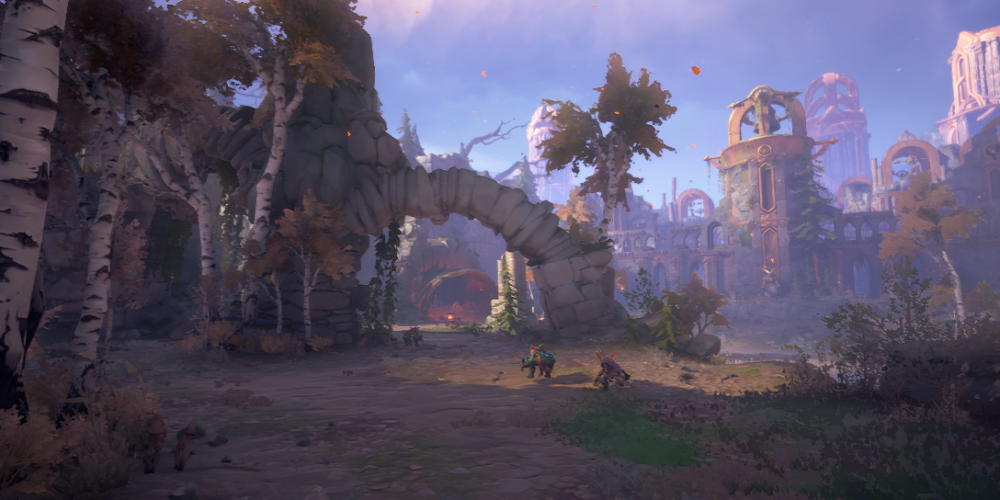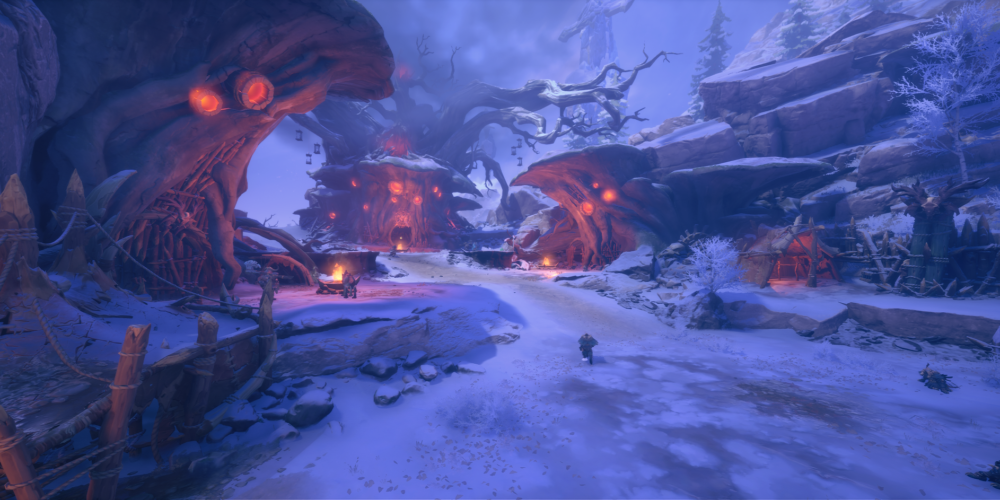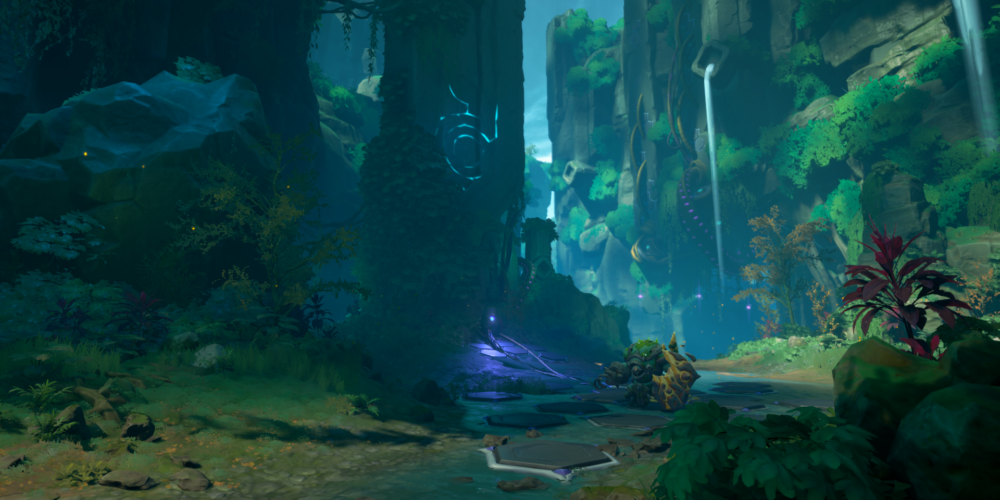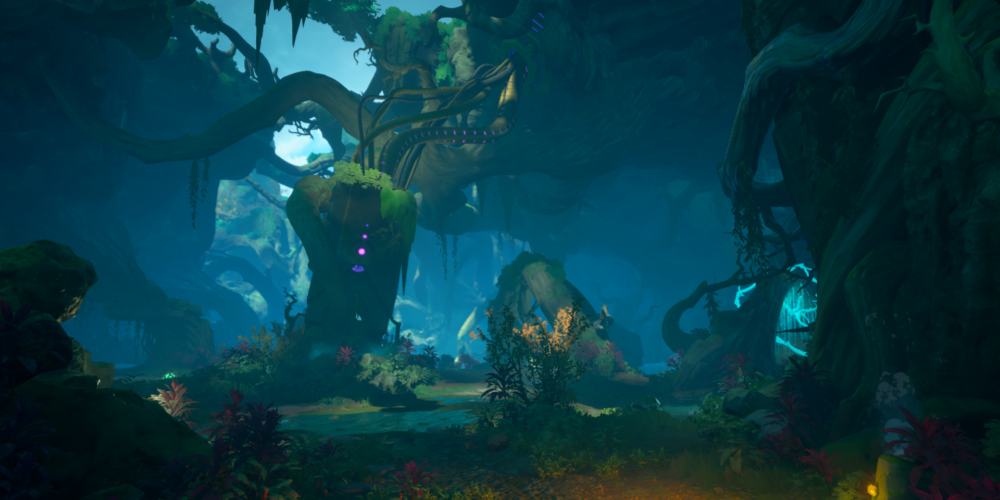WAYFINDER
THIRD PERSON ARPG
ROLE: Level Designer
COMPANY: Airship Syndicate
PLATFORM: PC & Console
- Designed and scripted replayable events and puzzles for open-world zones The Cut, Frostmarch, and Highlands.
- Developed traps and environmental hazards using Unreal’s Gameplay Ability System (GAS).
- Balanced combat encounters and loot placement.
- Implemented ambient AI behaviors in open-world zones.
- Generated documentation for areas of an Overland.
- Built all scripted content to support a replicated multiplayer environment, including dedicated servers and co-op.
- Worked closely with multiple departments to ensure their content was integrated successfully in each open-world zone.
OPEN WORLD DESIGN
On Wayfinder I designed large open-world environments from initial 2D sketches to 3D blockouts. I also implemented replayable scripted events from paper design to all the way to ship. Additionally, I worked with and created resources for, various other departments to advise on content placement and development. For example, creating Confluence docs for Overlands. These documents contained information for: quest flows, sub zone breakdowns, level ranges, and landmark breakdowns.
- Created 2D/3D blockouts for the Overland.
- Determined the placement and composition of encounters for each sub-area, what events would occur there, and ensured overall cohesion between sub-areas.
- Collaborated with artists to develop distinct themes for each sub-area.
- Created an inventory of scripted events needed for the Overland and shared it with event designers as they joined development.
- Worked with designers across multiple disciplines to guide specific content needs, including scripted events, encounter refinements, and POI blockouts.
- Generated documentation for each Overland area to communicate goals and gameplay to stakeholders and QA.
After completing the 2D layout phase, our level design process typically follows this general flow:
A level designer begins by blocking out the space using modular art assets, simple shape meshes, and terrain tools to establish the overall layout. Once the space is defined, gameplay elements—such as combat encounters, loot placements, and replayable events—are implemented. After the gameplay is thoroughly tested and validated, the level is handed off to a world builder, who focuses on refining the environment and finalizing asset placement.
The Cut
The Cut is Wayfinder’s third and final Overland in the story. Its a cavernous maze-like structure and acts as a base of operations for our heroes during the unfolding of story events. Having story beats more tightly ingrained with the gameplay of the zone was a priority.
As an example, in Eldren Interference, I created a story version of the event with an additional scripted sequence and new enemy encounters.
Frostmarch
Breath of the Wild was a big inspiration on the design direction. During the 3D blockout I focused on scale, pacing of POIs, and shaping the terrain to tease landmarks and keep sightlines focused. I tried to always have a landmark visible on the horizon for both orientation purposes and exploration.
Because this zone was our largest to date, I created zone breakdowns during early development, listing potential gameplay events, theming, and quests to help onboard artists and quest designers. This helped initial zone
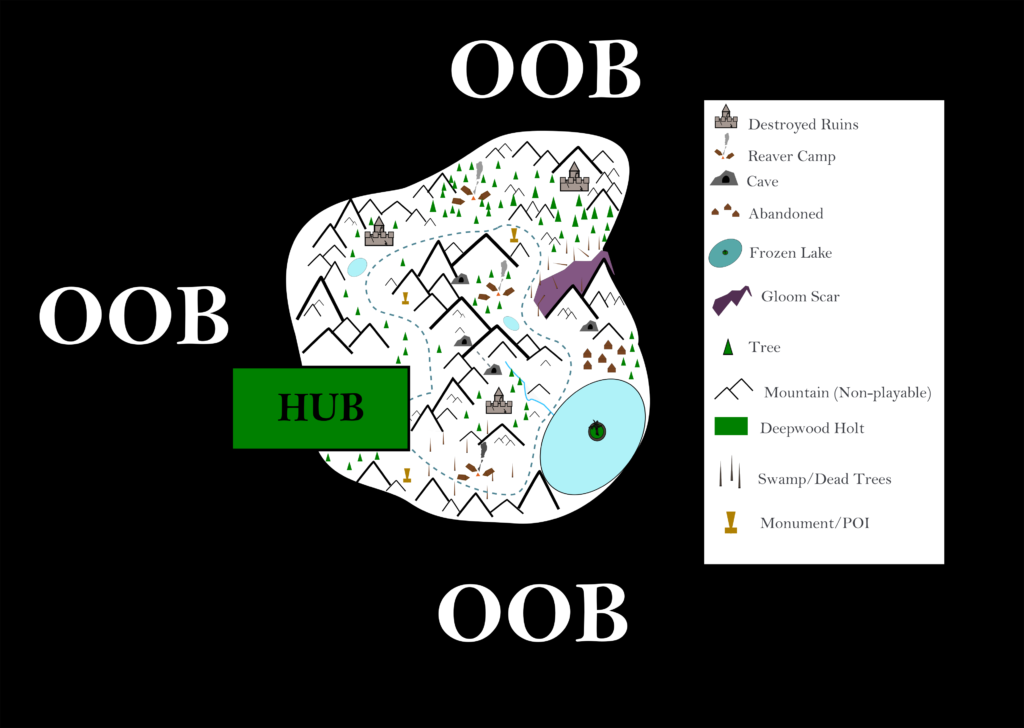

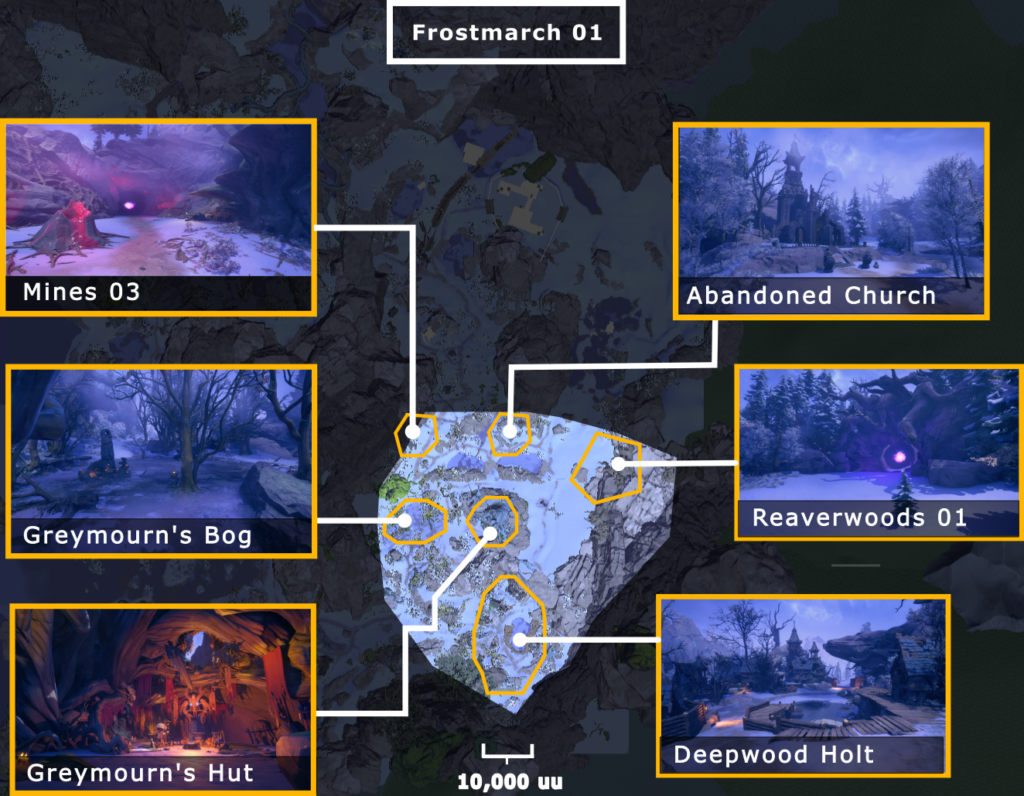
Highlands
Highlands is the player’s first Overland experience in Wayfinder and was my first task as a level designer. I partnered with our art director who was leading the layout development to bring a design eye to the map. This included blocking out various locations like Ironstone Keep, the Stone King’s tomb, Outer Aurelian, and the Wurm Cave. I also provided advisement on sightlines, pacing, and generally tried to be a resource for other departments as quests, events, and bosses were added to the map.
SCRIPTED EVENTS
Wayfinder’s events are replayable gameplay moments that trigger based on time or player actions. Some have single objectives with light combat and others are full takeovers where visuals and enemy compositions change for an area. Events are built using Unreal Engine’s Blueprint system and GAS (Gameplay Ability System).
- Took events from paper design to ship.
- Created event actors and AI behavior that replicate in a multiplayer environment.
- Designed wave-based encounters, event logic and visual state changes.
- Collaborated with art, vfx, and sound to provide better affordance during event state changes.
Below are highlighted events I owned from concept to ship:
Seeds of Corruption
Seeds of Corruption is themed four staged repeatable event which culminates in a world boss fight. Zachery Wheeler was responsible for scripting and designing the boss fight. Stages one through three asked players to purge altar sites of enemies who were corrupting the area. After the third stage was complete, a hole would open equidistant from the three altar sites and invite players into the world boss’s arena for the fourth and final stage.
The total play space for the event was quite large and in order to lead players from one stage to the next I placed a vortex above the active altar site. After an altar site was purged, the vortex would move to the next altar. I also force completed any remaining encounters near the purged altar and granted players a speed buff to make their travel to the next altar quicker.
Eldren Interference
Eldren interference is an event made up of two parts. Part 1 requires the player solve a puzzle around an large machine. Once the player solves the puzzle, they can turn on the machine and gain access to the portal that will take them to a new area, beginning Part 2. Part 2 tasks the player with defeating a boss which is accompanied by a wave of varying enemies.
Bridge Sentry
Bridge Sentry is an event that requires you to “summon” the boss by capturing 3 equidistance points around the arena. During the capture of these points, enemies will spawn and try to stop you. Once all three points have been captured a boss will spawn with unique abilities.
Sentinel Revival
Sentinel Revival tasks the player with disrupting a revival procedure. The player must eliminate the unshielded adds before the Sentinel (giant robot) gets their health restored back to 100%. If the player is successful, the Sentinel’s health will stop refilling, and the player must then contend with a weakened Sentinel and the now unshielded enemies.
The Gauntlet
The Player must escort 3 data orbs to the center of the arena to summon a boss. The orbs must have a player present inside their AOE (Area of Effect) in order for the orb to progress forward. Going faster if there are more than players inside. If enemies step inside the orb, the orb will significantly slow down and will not return to its normal speed until all enemies within its AOE are eliminated.
Eldren Ambush
This is an event that happens in various spots around the map. The player will overlap an invisible trigger calling forth enemy pods to crash down around the player. The player must defeat the encounter to complete the event.
Hollow Root
Around the map in predetermined locations lies a large seed that is infecting the area. Players must contend with enemies surrounding the seed and destroy it. The destruction of the seed calls forth an elite class enemy.
Environmental Hazards
Traps in Wayfinder are primarily found in the randomly generated dungeons. They can be triggered or always on. They serve to keep the players on their toes and also provide a unique opportunity to deal damage to enemies as well. Initially, traps were not impactful enough and were often disregarded by players, as their damage and placement within the dungeon felt insignificant. To address this, I focused on polishing the visual and audio cues (tells), scaling the damage appropriately, and better integrating the traps within the tiles. I heavily relied on Unreal’s GAS system to distribute damage to players. This also helped me when I started scripting enemy abilities for scripted events in Overlands.
- Used Unreal’s GAS (Gameplay Ability System) to create trap damage gameplay effects and difficulty scaling.
- Scripted all trap behaviors (Activation, Deactivation, Triggered, Looping, etc) using programmer supplied base classes.
- Audited every tile in dungeon set to evaluate best trap placements.
- Scripted traps together for complex chaining behaviors.
